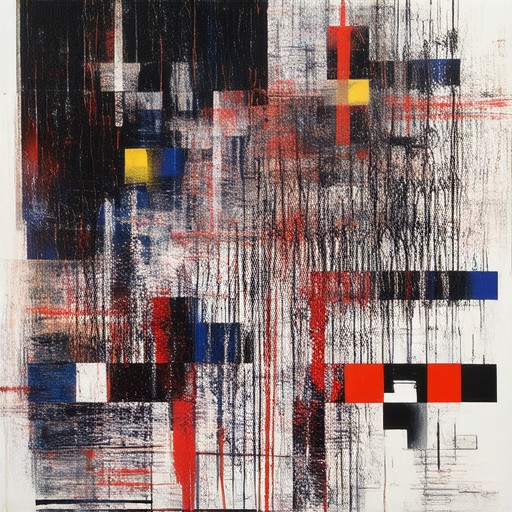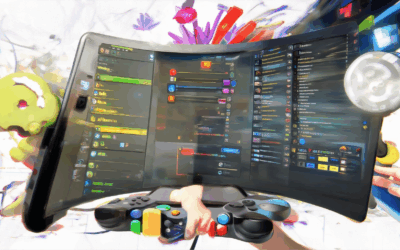Creating a comprehensive and well-structured game design document is a cornerstone of successful game development, serving as a vital roadmap for both teams and players. This essential guide provides a clear framework for organizing intricate details, ensuring seamless communication, and maintaining consistency throughout the creative process. From outlining core mechanics to detailing art styles and narratives, a well-crafted game design document becomes the backbone of your project, guiding every decision and fostering a unified vision. Whether you’re a seasoned developer or just beginning, mastering the art of writing game design docs can significantly enhance your project’s quality and longevity, making it an indispensable tool in your creative toolkit.
Key Takeaways
– Craft Compelling Documentation: Develop detailed and organized game design documents to guide development and ensure clarity throughout the creative process.
– Adopt the 7 Core Game Design Principles: Focus on player motivation, clear goals, balanced gameplay, exploration, social interaction, iterative refinement, and platform optimization to create engaging experiences.
– Apply the 40-Second Rule: Implement this strategy to maintain exploration appeal, ensuring players discover new content quickly and stay motivated.
– Master the Three Cs of Game Design: Excel in Character, Controls, and Camera design to deliver immersive, accessible, and enjoyable gameplay.
– Leverage Resources for Improvement: Utilize guides and tools to enhance character design, optimize control schemes, and master camera mechanics, ensuring your game stands out.

What are the 7 stages of game design?
- Concept Creation
The initial phase involves brainstorming and outlining the core idea of the game. This includes defining the genre, theme, and gameplay mechanics. Artists and designers collaborate to create concept art and storyboards to visualize the game world. - Design Document
A detailed document is created to outline the game’s vision, objectives, and technical specifications. This document serves as a blueprint for all subsequent phases and includes visuals, character descriptions, and level designs. - Prototyping
In this stage, a functional prototype is developed to test the core mechanics and user experience. Feedback from playtests helps refine the controls, camera angles, and overall gameplay flow. - Art Style & Character Design
The team works on establishing the visual identity of the game. This includes designing characters, environments, and objects, ensuring consistency across all assets. Concept artists create detailed sketches and 3D models to bring the game world to life. - Level Design
Levels are designed to guide players through the game, balancing challenge progression, and immersion. Each level is crafted to reflect the game’s theme and to enhance the player’s journey. - Testing & Iteration
Rigorous testing occurs to identify and fix bugs, optimize performance, and ensure the game is enjoyable. Playtesting sessions with target audiences provide valuable feedback to refine the experience. - Launch & Post-Launch Support
The final stage involves releasing the game to the market and providing ongoing support. Monitoring player feedback, updating the game, and planning expansions or DLCs ensures the game remains successful in the long term.
Best Program for Game Design Documents
Creating a comprehensive game design document (GDD) is essential for organizing and planning your game project. Whether you’re working on an indie game or a large-scale project, having a well-structured GDD ensures clarity and helps keep everyone on the same page. Here are some of the best programs and tools available:
1. **Unreal Engine Documentation System**
The Unreal Engine provides a robust documentation system that allows you to create detailed game design documents. Its intuitive interface and extensive library of assets make it a favorite among developers.
2. **Unity Documentation**
Unity offers a powerful documentation system tailored for game development. It includes templates and tools that streamline the process of creating game design documents, making it a great choice for both indie and professional developers.
3. **Figma**
Figma is a versatile design tool that excels in creating and collaborating on game design documents. Its cloud-based platform allows teams to work together seamlessly, making it ideal for remote development teams.
4. **Procreate**
Procreate is a specialized design tool for iPad users. While primarily known for vector graphics, it also supports creating detailed game design documents with its extensive library of brushes and tools.
5. **Adobe XD**
Adobe XD is a powerful tool for designing and prototyping user experiences, including game interfaces. Its ability to create interactive prototypes makes it a valuable asset for game designers.
Choosing the Right Tool
When selecting a tool for your game design document, consider factors like ease of use, collaboration features, and integration with your development environment. Each tool has unique strengths, so it’s worth experimenting with a few to find the one that best fits your workflow.
By leveraging these tools, you can create a game design document that is both visually appealing and functionally robust, setting the foundation for a successful game development journey.

How Long Should a Game Design Document Be?
The length of a game design document (GDD) varies depending on the complexity of the game and the project’s requirements. Here’s a breakdown of factors influencing its length:
Simple Indie Games
For smaller, independent games with fewer mechanics and a straightforward design, a GDD typically ranges between 10 to 15 pages . This covers core gameplay, basic features, and essential art style directions.
Complex AAA Titles
Large-scale projects, such as AAA games, often require much longer documentation. These can span 50 to 100 pages or more , detailing intricate systems, extensive storylines, and advanced technical specifications.
Influence of Development Phase
- Prototyping Stages : Early versions may be around 20-30 pages , focusing on core mechanics and initial designs.
- Detailed Production Docs : As development progresses, the document expands to include art styles, level designs, and narrative details, often reaching 80+ pages .
Team Size and Resources
- Small Teams : Developers working alone or in small groups tend to keep GDDs concise, around 15-25 pages , to maintain clarity without overwhelming stakeholders.
- Larger Teams : Larger teams or those handling complex projects benefit from extensive documentation, often exceeding 100 pages , ensuring all team members are aligned.
Sections to Consider
A comprehensive GDD generally includes sections such as:- Abstract : Summary of objectives and scope.- Introduction : Background, target audience, and development goals.- Core Gameplay Mechanics : Detailed rules and interactions.- Level Design : Layouts and environmental storytelling.- Art Style : Visual direction and character design.- Sound Design : Audio elements and implementation plan.- Development Timeline : Key milestones and dependencies.
Examples and Best Practices
Referencing established frameworks like Unity’s GDD template or Naughty Dog’s approach can offer valuable insights. These resources provide structured examples tailored to different project scales.
By tailoring the GDD length to suit the game’s complexity and project needs, developers can ensure effective communication and alignment among team members, leading to a successful project outcome.

What Are the 7 Game Design Rules?
Here are the fundamental principles of game design, structured to guide developers in creating engaging and successful games:
- Focus on Player Motivation : Design games that cater to core motivations like achievement, challenge, and social interaction. Keep players engaged through meaningful objectives and rewards.
- Create Clear Goals : Provide a clear purpose and progression system. Players should understand their objectives and feel a sense of accomplishment as they advance.
- Balance Fun and Challenge : Strike a balance between accessibility and difficulty. Too easy, and players lose interest; too hard, and they become frustrated.
- Encourage Exploration and Discovery : Allow players to uncover hidden elements, secrets, or unlockable content to enhance replayability and immersion.
- Foster Social Interaction : Incorporate multiplayer elements or cooperative gameplay to encourage community building and shared experiences.
- Iterate Based on Feedback : Continuously gather player feedback and test prototypes to refine mechanics, levels, and features.
- Adhere to Platform Constraints : Optimize game design for the target platform, considering hardware limitations and user interface best practices.
By following these principles, developers can create games that resonate with audiences and stand out in the competitive landscape.
The 40-Second Rule in Game Design
The 40-second rule is a game design principle that ensures players remain engaged by ensuring they encounter points of interest within 40 seconds of moving in any direction. This rule is particularly popular in open-world games like Genshin Impact .
In Genshin Impact , for example, the 40-second rule is implemented to maintain exploration appeal. As players move in any direction, they can expect to encounter something of interest—such as a treasure, an enemy, or a hidden pathway—within 40 seconds. This prevents exploration from becoming monotonous and ensures that every movement feels purposeful and rewarding.
This principle extends beyond Genshin Impact . Many games, including The Legend of Zelda: Breath of the Wild , employ similar strategies to keep players motivated during exploration. By ensuring quick discovery of new content, the 40-second rule enhances immersion and keeps players invested in their journey.

What are the three C’s of game design?
The three core aspects of game design, often referred to by the acronym “3Cs,” are Character , Controls , and Camera . These elements work together to create an engaging and immersive gameplay experience.
1. Character Design
Character design focuses on creating playable characters that players can connect with. This involves defining the character’s personality, appearance, and abilities. Effective character design ensures that players feel invested in their creations, fostering emotional attachment and encouraging continued play.
– Examples : In games like The Legend of Zelda or Super Mario Bros. , characters are designed to fit the game’s theme and provide unique experiences.
– Resources : Learn more about character design tips to enhance your game’s appeal.
2. Controls Design
Controls design refers to how players interact with the game through buttons, sticks, or touchscreens. Intuitive and responsive controls are crucial for enjoyable gameplay. Developers must balance accessibility with depth, ensuring that both casual and hardcore gamers can pick up the game and thrive.
– Examples : Titles like Minecraft and Fortnite excel due to their simple yet flexible control schemes.
– Guides : Explore control scheme optimization to fine-tune your game’s user experience.
3. Camera Mechanics
Camera mechanics determine how players view the game world. A well-designed camera system allows players to explore environments comfortably while maintaining immersion. This includes handling movement, rotation, and zoom adjustments.
– Examples : Games like The Witcher 3 and Overwatch utilize dynamic cameras to enhance storytelling and combat dynamics.
– Best Practices : Check out camera mechanics tips for professional-grade implementations.
Conclusion
Mastering the three Cs—Character, Controls, and Camera—is essential for creating a polished and engaging gaming experience. By focusing on these elements, developers can ensure their games are not only fun but also accessible and immersive for players of all skill levels.




0 Comments